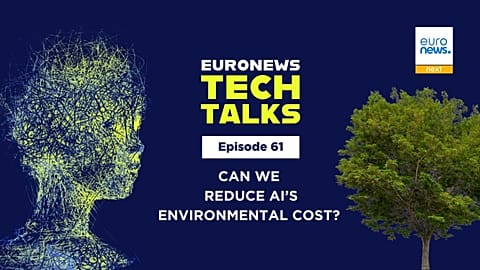Energy crisis, climate change, geopolitical instabilities. Could hydrogen solve them all? But wait, what exactly is hydrogen?
Since the beginning of the war in Ukraine in February 2022, the energy crisis has led the European public debate. Among the solutions proposed to reduce the European countries' dependency on gas imported from Russia, hydrogen has emerged as a significant contender.
Spain and France have already laid out investment plans to bolster this energy method. But what exactly is hydrogen, and is it Europe’s fuel of the future?
Hydrogen, the mysterious energy carrier
First discovered in 1766 by the British scientist Henry Cavendish, hydrogen is an odorless, tasteless, and highly flammable chemical element.
It exists in nature as the result of reactions with other sources of energy, and it is thus defined as an energy carrier, as it facilitates the transport and storage of other energy sources.
Depending on the reacting fuel, there are different types of hydrogen associated with different colours. Grey hydrogen is produced by natural gases, green hydrogen from renewable energies, black hydrogen from coal, pink hydrogen from nuclear power, and blue hydrogen from carbon capture.
The most popular colour of hydrogen is the grey one, which accounted for 62% of the global hydrogen production in 2022. It is produced by reacting the methane contained in greenhouse gases with high-temperature steam and is used in the agricultural, pharmaceutical, and manufacturing sectors. Its problem, however, is that just like its primary source of energy, it is polluting. In 2022, making grey hydrogen caused 2% of the world's carbon emissions.
A more sustainable alternative to this energy source is green hydrogen, created from renewable energies through electrolysis, a process employing electric energy to separate molecules of water and retain the hydrogen part.
Conversely to grey hydrogen, producing the green one does not release any emissions; however, it is much more expensive.
"The issue with green is that we don't have so much solar and wind power," explains Professor Ad van Wijk, from TU Delft University. "We have to install much more solar and wind infrastructures and the prices to do that and later do the electrolysis are still higher than the ones to produce grey hydrogen," he adds.
So if green hydrogen is very expensive, and grey hydrogen is very polluting, why is there so much hype around hydrogen?
White hydrogen, the underexplored energy source
"A year and a half ago, no one was talking about natural hydrogen," Philippe De Donato, research director at France’s National Center for Scientific Research and professor at the University of Lorraine explains. "And well, there's this natural hydrogen—hydrogen directly produced by nature. It's a primary source of energy, meaning we extract it directly from the underground, and we can use it directly as an energy source."
Originally found in the town of Bourakébougou in Mali in 1987, white hydrogen is a primary energy source, created underground by chemical reactions. Compared to other forms of hydrogen, native hydrogen is still rather understudied but has been found in many European locations, such as the French region of Lorraine.
In this industrial part of France, De Donato and his colleague Jacques Pironon spent more than four years conducting the Regalor Project to extract exploitable methane resources. But, in addition to the greenhouse gas, they also found native hydrogen and demonstrated that its percentage increases with the depth of the excavation. "For us, it was a real surprise, it was something that had never been demonstrated before," Pironon admits.
Despite the Regalor project ended in December 2023, many studies are being conducted around Europe to find other hidden sources of white hydrogen.
Hydrogen, where are we at in the EU?
Hydrogen is a relatively new player in the European Union's energy system.
In 2022, just 8% of the global hydrogen production came from Europe. This hydrogen accounted for less than 2% of Europe’s energy consumption and was almost entirely produced from polluting greenhouse gases.
"It really started with the Green Deal. So, at the beginning of Ursula von der Leyen's term in 2019-2020," Anna Hubert, energy journalist at Le Contexte explains. "We realized that significant efforts were needed to decarbonize the energy mix of the EU. This involved not only developing traditional renewable energies, but also investing in other technologies that were somewhat less mature, such as hydrogen."
In December 2023, the EU approved the Gas Package and put money into investment funds for projects aimed at producing green hydrogen within the continent. Among these initiatives, there is for instance 800 million euros-worth Bank of Hydrogen, which encourages industries and countries to experiment with this energy source.
Despite significant investments coming from Brussels, some major obstacles remain to integrating the different forms of hydrogen within the European energy landscape.
The European institutions are still drafting the definitions of the different colours of hydrogen and are far from talking about its native version.
Besides, many political and scientific questions are still waiting for a clear answer: Is investing in green hydrogen going to undermine the development of renewable energies? Where is white hydrogen located? How can people use it?



















